Discover essential tips for planting and growing Floss Flower in your garden. This beginner’s guide covers everything from soil preparation and planting techniques to watering and care for vibrant, healthy blooms.
Are you searching for an eye-catching, low-maintenance annual to add vibrant colors and interesting textures to your garden? Look no further than the whimsical floss flower! With their globe-shaped blooms resembling quirky troll dolls or furry pom-poms, these unique plants are sure to enliven any sunny flowerbed or patio container with their bold, fuzzy features.
Whether you’re an experienced green thumb or just getting started with gardening, floss flowers make an excellent choice. Follow these beginner-friendly planting and care tips and you’ll be enjoying these distinctive blossoms all season long!
What are Floss Flowers?
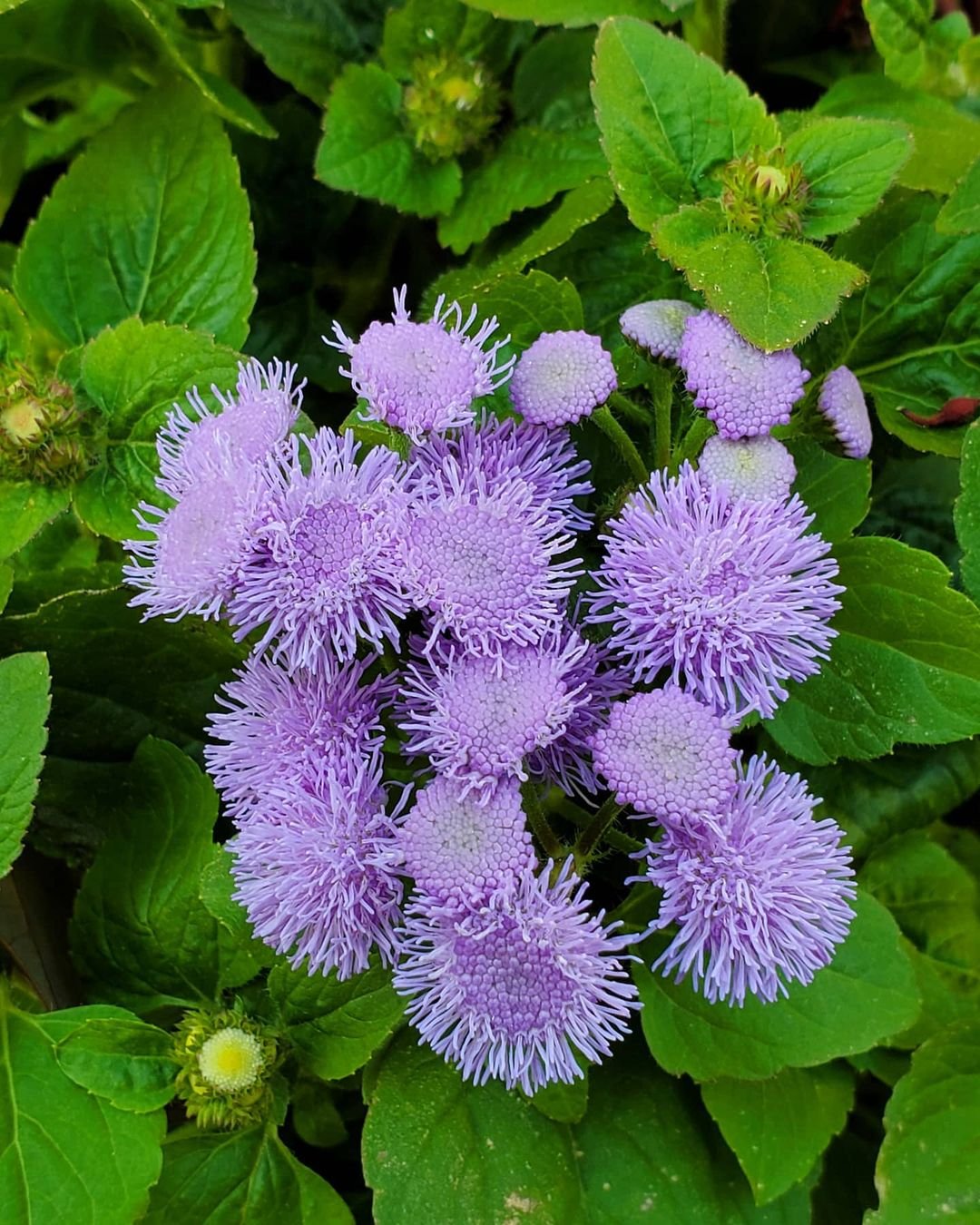
Here’s a short information chart about Floss Flowers:
| Aspect | Information |
|---|---|
| Botanical Name | Ageratum houstonianum |
| Common Name | Floss Flower |
| Plant Type | Annual |
| Zones | Typically grown as annuals, USDA Zones 2-11 |
| Sun Exposure | Full sun to part shade |
| Soil Type | Well-drained, fertile soil |
| Watering | Regular; keep soil evenly moist |
| Growth Habit | Compact, mounding |
| Height/Spread | Height: 6-24 inches; Spread: 6-18 inches |
| Special Features | Long-lasting blooms in various colors; attracts butterflies |
Also known as ageratum or pussy toes, floss flowers (Ageratum houstonianum) are warm-weather annuals native to Mexico and Central America. They belong to the sunflower family (Asteraceae) and are close cousins to the popular zinnia flower.
The most distinguishing characteristic of floss flowers is their tightly clustered, fuzzy flower heads. Though tiny when viewed up close, these puffball blooms create quite the showy display when massed together, appearing like vibrant bursts of cotton candy or pom-poms.
Floss flower hues range from striking shades of blue, purple and pink to soft pastels and clean white forms. Their soft, feathery textures pair beautifully with other annual bloomers like petunias, marigolds and zinnias in eye-catching combos.
When and How to Plant Floss Flower Seeds
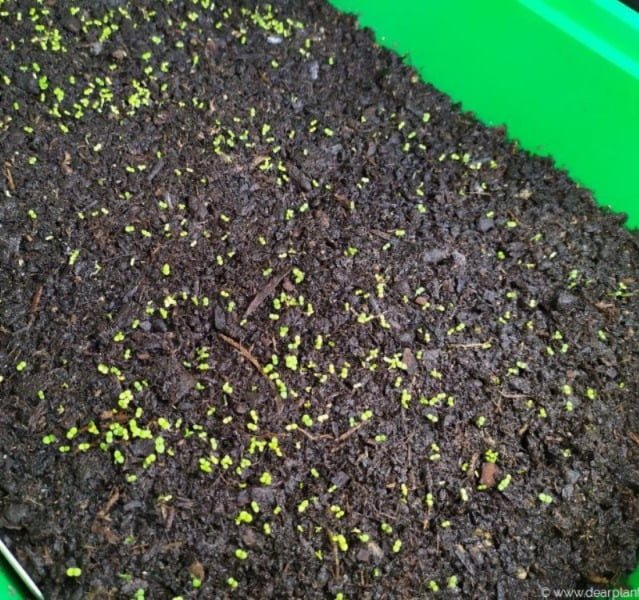
One of the biggest advantages of growing floss flowers is how easy they are to start from seed. You can either direct sow the fine seeds right into the garden after the last spring frost or start them indoors about 6-8 weeks earlier for a head start.
To direct sow, simply sprinkle the tiny seeds over loose, well-draining soil in a sunny spot and lightly rake them into the top 1/4 inch of soil. Keep the area consistently moist until seedlings begin to emerge in 7-14 days.
For an indoor head start, sow the seeds into a seed starting tray or peat pots filled with a well-draining seed starting mix. Provide bright light and bottom heat, if possible, to aid in faster germination. Once the seedlings develop their first set of true leaves, transplant them out into individual pots to allow the roots to establish before hardening off and moving outdoors.
Floss Flower Planting and Care Tips
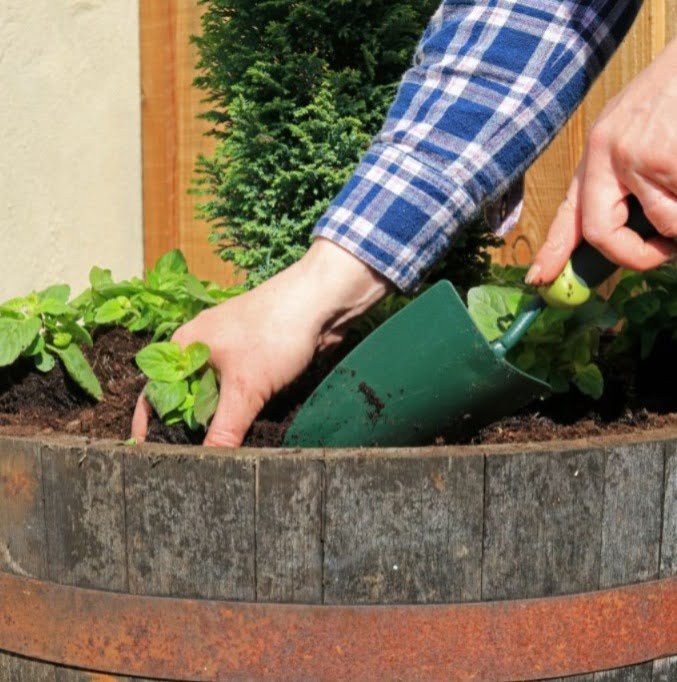
Floss flowers may be petite bloomers, but they pack some serious flower power! With a little basic care, you’ll be rewarded with their fuzzy, eye-catching flowers from spring through fall.
Sun Requirements
Give your floss flowers a spot that receives at least 6 hours of direct sun per day. The more sunlight, the more prolifically they’ll bloom! In extremely hot summer areas, a little afternoon shade can help prevent wilting.
Well-Draining Soil
Like most annuals, floss flowers prefer well-drained, nutrient-rich soil. Amend garden beds or containers with compost or aged manure before planting to improve drainage and fertility.
Consistent Moisture
Although drought-tolerant once established, floss flowers bloom best with regular water. Aim for about 1 inch of moisture per week from rain or irrigation. Avoid letting the soil dry out completely.
Pinching and Deadheading
For bushier, more compact plants, pinch back the growing tips when seedlings are 4-6 inches tall. Deadhead spent blooms to promote continued flowering through the season.
Fertilizing
Feed with a balanced liquid fertilizer monthly or apply a slow-release fertilizer at planting time for season-long nutrition.
Growing in Containers
Floss flowers make fantastic spiller and filler plants for container gardens! Use a well-draining potting mix and ensure containers have adequate drainage holes.
Winter Care
Since floss flowers can’t survive freezing temperatures, treat them as annuals in cold climates. In frost-free areas, they may return reliably each year as perennials.
With these simple care tips, you’ll have no problem growing vigorous, heavy-blooming floss flower plants to brighten up your landscape. They truly are one of the easiest and most rewarding annuals for beginning gardeners!
Floss Flower Color Varieties
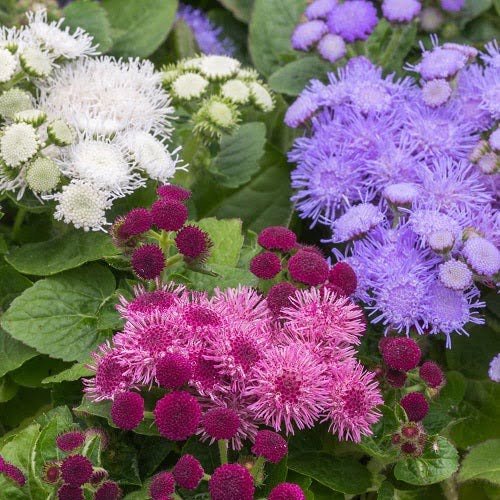
While classic blue floss flowers are perhaps the most well-known variety, there’s actually a striking rainbow of colors to explore:
- Blue Shades: ‘Blue Blazer’, ‘Blue Mink’ and ‘Blue Danube’
- Purple Hues: ‘Red Top’, ‘Morado’ and ‘Dara Purple Burst’
- Pinks: ‘Pink Ball’, ‘Pink Fuzz’ and ‘Hawaiian Sunset’
- White: ‘Snowball’, ‘White Mink’ and ‘White Cloud’
- Bicolor Blends: ‘Bluefields’, ‘Blue Puffs’ and ‘Baby Blushes’
You can plant a solid swath of one vivid color or creatively mix shades together for an eye-catching floral display. Taller 18-24 inch varieties make impactful border plants, while compact 6-10 inch dwarf floss flowers work well as bedding plants and ground covers.
Companion Plants for Floss Flowers
With their lush, fuzzy textures and brilliant hues, floss flowers easily complement many other flowering annuals. Here are some colorful combos to try:
- Petunias: Pair purple or blue floss flowers with bolder petunias in contrasting shades like red, pink or yellow.
- Marigolds: The feathery texture of floss flowers beautifully offsets the dense, ruffled blooms of French or African marigolds.
- Zinnias: For a truly vibrant, high-impact flowerbed, interplant floss flowers with the dahlia-like blooms of colorful zinnias.
- Sweet Alyssum: Use white or pink trailing sweet alyssum as a delicate ground cover in front of upright floss flower plants.
You can also mix floss flowers into annual potted arrangements with calibrachoa, verbena and other spiller plants for a burst of texture.
Using Floss Flowers in Garden Design
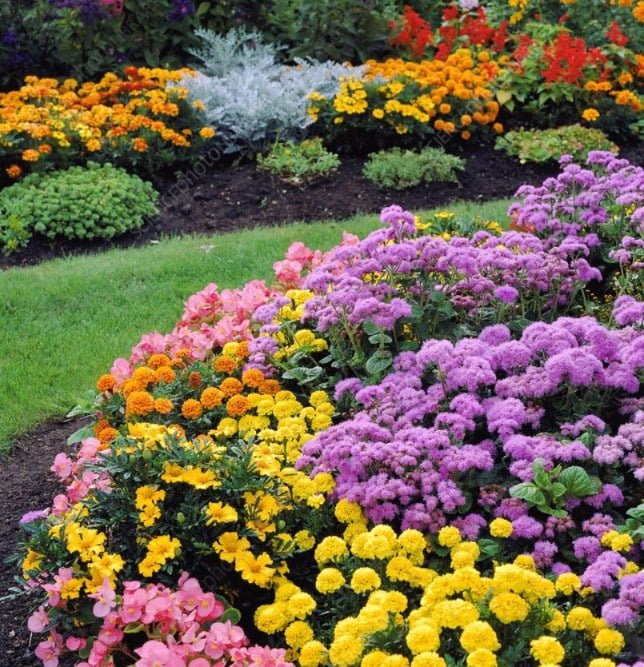
Thanks to their versatility, unique shapes and kaleidoscope of shades, floss flowers offer endless possibilities when it comes to creative garden design:
- Borders: Plant bold ribbons of floss flowers along walkways, fences or property edges.
- Mass Plantings: Pack floss flowers together in sizeable drifts for undeniable color impact.
- Containers: Mix trailing and upright varieties into patio pots and window boxes.
- Children’s Gardens: Their fuzzy, whimsical blooms make floss flowers perfect for kid-friendly gardens!
- Butterfly Gardens: The pollen-rich flowers help attract and nourish many species of butterflies.
- Indoor Bouquets: With their long, sturdy stems, floss flower blooms last a long time in cut arrangements.
With their extremely long bloom season from spring until first frost, you’ll have an abundance of fuzzy flowers to enjoy over many months.
Purchasing Floss Flower Seeds and Plants

Ready to add some floss flower fun to your landscape? You can easily find seeds and plants from these sources:
- Online Retailers: Browse the selections at reputable seed websites for the latest floss flower cultivars.
- Garden Centers: Check the aisles in spring at local nurseries, hardware stores and big box stores for seed packets and bedding flats.
- Seed Trades/Swaps: Join local gardening groups or online communities to trade for rare or heirloom floss flower varieties.
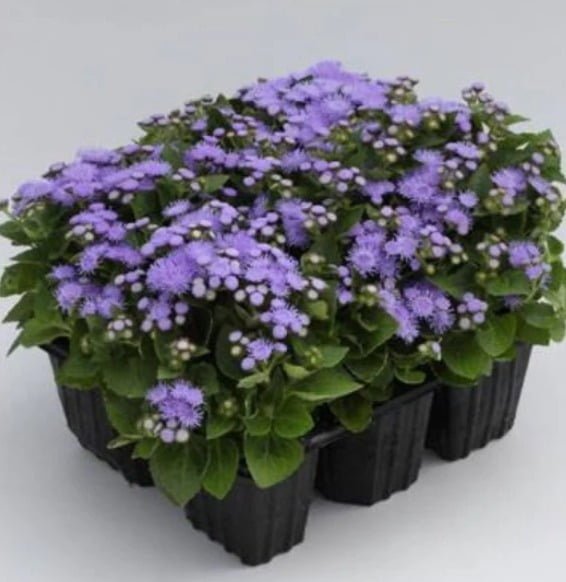
When shopping for plants rather than seeds, select stocky, healthy specimens without signs of disease or pest damage.
Caring for Potted Floss Flowers
Did you know that floss flowers also make excellent houseplants? With their tidy, mounding habits and easy care requirements, they can bring long-lasting color and texture to indoor spaces!
To grow floss flowers in containers indoors, use a well-draining potting mix and a pot with ample drainage holes. Place your planter in a sunny window or underneath grow lights. Water thoroughly whenever the top inch of soil becomes dry, allowing the excess moisture to drain away.
Feed with a water-soluble fertilizer every 2-4 weeks during the active growing season for best blooming performance. In winter, reduce watering and move plants to a cool, bright spot – they may go semi-dormant but should flush out new growth in spring.
With their compact size and reduced pest/disease issues indoors, floss flowers make fun, unique houseplants to enjoy up close!
Floss Flower Fun Facts
Beyond their showy ornamental value in gardens, floss flowers have played interesting roles throughout history:
- The dried flower heads were once used as tinder for starting fires, giving the plant its alternate name “pussytoes.”
- In Mexico and Central America, the fragrant floss flower has traditional uses in herbal remedies and even hair treatments.
- During the Victorian era, floss flowers symbolized patience and lasting affection in the language of flowers.
- Their soft, fuzzy textures inspired the name Ageratum, derived from the Greek words “agera” meaning non-aging and “tomon” meaning cutting.
So whether you grow these quirky bloomers for their beauty, history, or just sheer fun factor, floss flowers are guaranteed to delight and intrigue!
Potential Pests and Diseases
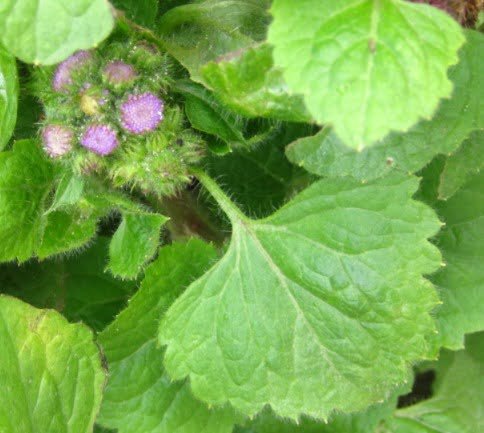
While generally low-maintenance, floss flowers can occasionally experience some pest or disease issues. The most common are:
- Aphids: These sap-sucking insects can spread viral diseases. Use insecticidal soap or a strong spray of water to dislodge aphids.
- Spider Mites: Hot, dry conditions favor these tiny spider-like creatures that cause stippled foliage damage. Increase humidity and spray with horticultural oil if needed.
- Powdery Mildew: A white, powdery fungus on leaves signaling poor air flow or overcrowding. Improve plant spacing and avoid overhead watering.
- Root/Stem Rots: Caused by overly wet soil and poor drainage. Allow soil to dry between waterings and ensure good drainage.
Providing the proper growing conditions and quickly addressing any issues will keep your floss flower plants healthy and vigorous all season.
Design Beyond with Floss Flowers
With their distinctive, cotton candy-like blooms and season-spanning color, floss flowers make for ultra eye-catching accents in gardens of any size or style. Let their soft textures and vibrant hues infuse your outdoor spaces with fun, whimsical flair!
Use them to border paths, fill sunny annual beds or create a landing pad of brilliant blooms around other showstopping plants. You can even bring the fuzzy flowers indoors as unique, long-lasting houseplants.
However you choose to showcase these unique bloomers, one thing’s for sure – floss flowers’ quirky, textural beauty is guaranteed to spark smiles from all who encounter them. So why not invite a little joyful, colorful floss flower fancy into your garden world this season?
Pingback: Battling Creeping Charlie: Top Tips for Managing Ground Ivy in Your Yard
Pingback: Floss Flower Planting and Growing Tips for Begi...
Pingback: Growing Pampas Grass: Tips for a Thriving Garden -